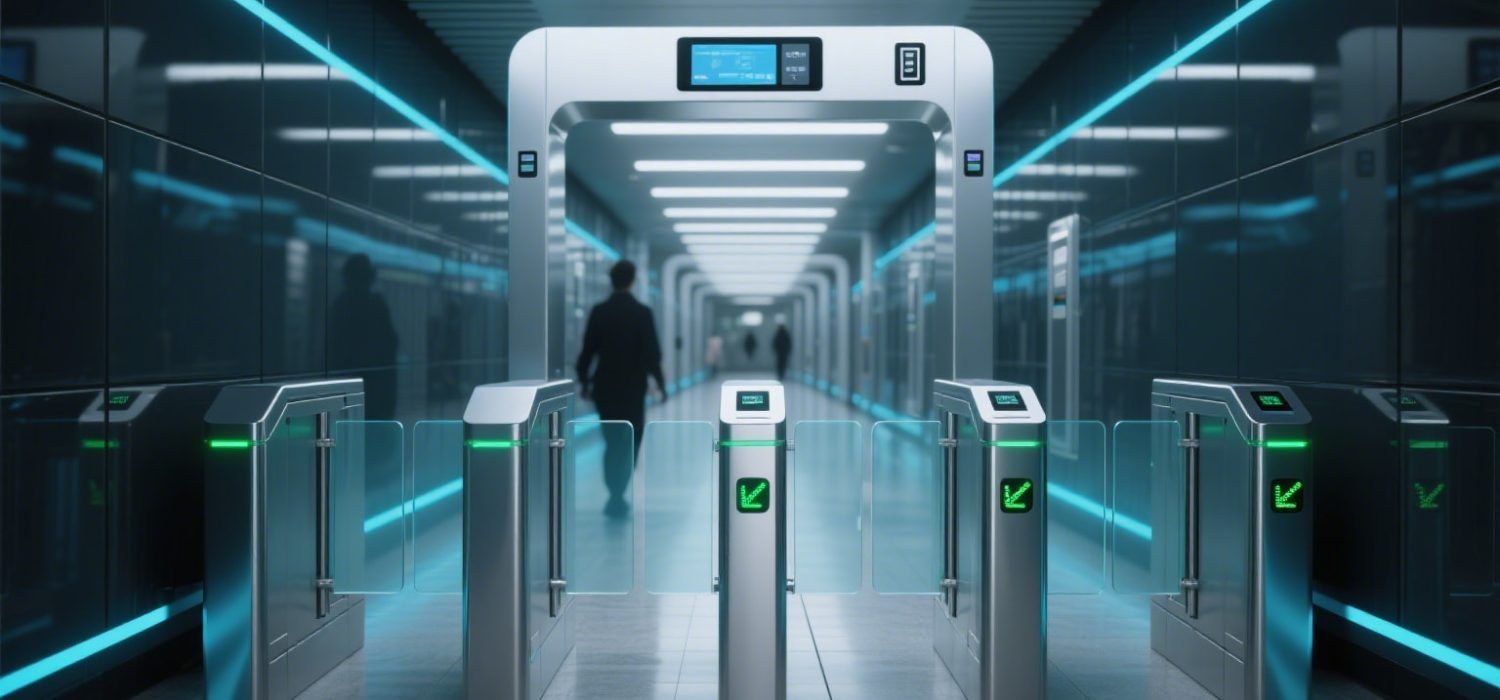Speed Gate : a Modern Access Symbol
In today’s fast-paced urban environments, speed gates have become an iconic element of modern infrastructure. Whether in corporate headquarters, subway stations, airports, or government buildings, they represent the perfect balance between security, efficiency, and aesthetics. Far more than just physical barriers, speed gates embody the evolution of access control—from slow, manual checks to seamless, technology-driven entry. As cities grow denser and public spaces busier, the demand for quick yet secure passage has never been greater. Speed gates meet this challenge by offering a fluid transition from one space to another, ensuring that movement is controlled without becoming an obstacle. They are no longer seen merely as equipment, but as an integral part of how people interact with built environments in the age of smart cities. To understand their growing role, we must first explore what a speed gate actually is and why it has become a standard in modern access systems.
What Is a Speed Gate?
In today’s fast-paced cities, speed gates have become a symbol of modern infrastructure. They appear in offices, subways, airports, and government buildings. These gates balance security, efficiency, and visual appeal. They are more than physical barriers in public spaces. Speed gates mark the shift from manual checks to seamless, tech-driven entry. Growing urban density increases the need for quick but secure passage. Speed gates provide smooth transitions without disrupting movement. They control access while maintaining user convenience. Today, they are integral to how people interact with smart buildings. To understand their role, we must first define what a speed gate is.
The Technology Behind Speed Gates
Speed gates operate through a combination of sensors, control systems, and precise motor mechanisms. High-accuracy infrared or laser sensors detect approaching users and track their movement in real time. Multiple verification methods—such as RFID, fingerprint scanning, facial recognition, or smartphone apps—allow flexible and secure authentication. AI algorithms identify unusual activities, such as tailgating or reverse entry, and trigger instant alerts. Integration with access control, attendance, and visitor management systems enables a unified operational workflow. This technology ensures that speed gates deliver not just speed, but also intelligent, adaptive security for various environments.
How Speed Gates Transform Everyday Experiences
Speed gates are not just pieces of security hardware—they are touchpoints that shape how people interact with a space. By blending advanced technology with human-centric design, they make everyday activities smoother, faster, and more secure. Here is how they transform daily experiences across different environments:
Streamlining Entry and Exit
First and foremost, speed gates significantly reduce waiting times. With high-speed opening and closing mechanisms, they allow a continuous flow of people without compromising security checks. For example, in office buildings during rush hours, they prevent long queues while still ensuring that only authorized individuals gain access. Moreover, because they integrate with multiple authentication methods—RFID, QR codes, facial recognition—users can choose the most convenient option, making entry both quick and personalized.
Enhancing Safety Without Slowing People Down
Unlike traditional checkpoints that may cause bottlenecks, speed gates combine real-time verification with safety protocols. Advanced sensors detect tailgating, reverse movement, or suspicious activity, and immediately trigger alerts. At the same time, in case of emergencies such as fire alarms, they switch to free-passage mode, enabling rapid evacuation. This balance of security and convenience ensures that people feel protected without feeling restricted.
Creating a Seamless Visitor Experience
From the moment a visitor arrives, speed gates help set a professional and welcoming tone. Integrated visitor management systems allow pre-registration, so guests can simply scan a code or tap a card to enter. Additionally, digital displays or LED indicators guide users intuitively through the gate, reducing confusion and enhancing the overall impression of the facility. As a result, businesses can maintain both efficiency and hospitality at their entry points.
Supporting Operational Efficiency for Organizations
Beyond user convenience, speed gates provide valuable operational benefits. They automatically log entries and exits, feeding data into attendance tracking systems without manual intervention. Facility managers can use analytics from these logs to understand peak usage times, allocate staff more effectively, and optimize crowd control. In the long run, these insights help reduce costs while improving service quality.
Speed Gates in the Era of Smart Cities
As cities, organizations, and public spaces embrace smarter, more connected infrastructures, speed gates are becoming an essential component of modern access control. Their role now goes far beyond simply regulating entry—they are integrated into urban systems, powered by emerging technologies, and designed for long-term adaptability.
Supporting Smart City Infrastructure
In smart cities, every second counts when moving people efficiently and safely. Speed gates in transportation hubs improve passenger flow and security checks. Subway stations, train terminals, and airports benefit from faster screening. On smart campuses, they manage access for staff, visitors, and contractors. These systems prevent unauthorized entry into sensitive or restricted areas. Industrial parks use them to protect valuable equipment and data. Public buildings rely on them for safety and crowd control. Government facilities also collect movement data to guide urban planning. Linked with citywide monitoring systems, speed gates boost efficiency and public security. They act as a vital connection point in the smart city network.
Trends Driving the Future of Access Control
The access control landscape is evolving quickly, with speed gates leading the change. Touchless authentication using facial recognition or mobile credentials is becoming standard. This reduces contact and improves hygiene in high-traffic areas. Edge AI processing enables split-second verification without relying only on cloud systems. This boosts both operational speed and system resilience. Digital twin integration helps planners simulate and optimize pedestrian flows before installation. Sustainability is now a major focus for many manufacturers. Low-energy standby modes reduce power consumption significantly. Recyclable materials and modular designs extend the product lifecycle effectively. These trends point to smarter, greener, and more connected speed gates in the future.
Choosing the Right Speed Gate for Long-Term Success
Selecting the right speed gate starts with understanding the space’s unique needs. Swing gates suit wide entrances and allow wheelchair access. Sliding gates offer a premium look and operate quietly. Flap barriers manage heavy traffic in transport hubs. Consider daily traffic volume and preferred authentication methods. Ensure the gate integrates with existing control systems. Match its design with the building’s architecture. Plan for future needs with software update support. Choose gates that adapt to new identification technologies. Ensure compatibility with next-generation security systems. The best choice balances performance, appearance, and adaptability.
Integration and Management
Integration with Other Building Systems
In the era of intelligent buildings, speed gates work as part of a connected ecosystem. Modern facilities integrate them with CCTV and AI video analytics. This setup enables real-time identity verification and instant threat detection. Security teams monitor entries live and respond to irregular activities quickly. Another integration is with visitor management platforms for smoother guest access. Visitors can pre-register and receive a digital pass on their phone. They pass through the gate without needing manual checks. Access rights adjust automatically based on schedules or event requirements. This approach saves time and reduces administrative workload.
Speed gates also support emergency management in modern facilities. Connected to fire alarms or evacuation systems, they switch to free passage instantly. This allows crowds to exit safely during emergencies. Advanced setups enable gates to link with lighting, HVAC, and elevator controls. These systems optimize energy usage and direct people during peak hours. Acting as a bridge between security, operations, and convenience, speed gates evolve into a central intelligence node in building infrastructure.
Maintenance and Lifecycle Management
Maintaining the efficiency and safety of speed gates requires a proactive maintenance plan. Daily upkeep includes cleaning optical sensors and checking drive systems. Panels should move smoothly without any obstruction. This prevents dust, debris, or wear from reducing performance. Regular technical inspections are equally important for long-term reliability. These inspections include software updates to improve cybersecurity and recognition algorithms. Updates also support new authentication technologies like mobile credentials or biometric upgrades. Facilities with modular designs can replace parts without removing the entire gate. Motors, hinges, or card readers are easily swapped when needed.
Modern maintenance now uses remote diagnostics and predictive analytics. Facility managers monitor system health in real time through connected platforms. Alerts notify them about abnormal activity or stressed components before failure occurs. This approach reduces downtime and extends equipment life. Strategic lifecycle management keeps systems future-ready for evolving standards. Gates can adapt to new access control technologies and integration demands. This strategy delivers cost savings and ensures consistent security and user satisfaction.
Conclusion
Speed gates have evolved from simple access barriers into intelligent, connected solutions that enhance security, improve efficiency, and elevate user experiences across a wide range of environments. From corporate offices to transportation hubs, and from smart campuses to urban infrastructure, they provide fast, reliable, and adaptable entry management. As technology advances, integration with AI, IoT, and sustainable design practices will further expand their role, making them an essential part of future-ready buildings and cities. By choosing the right speed gate and maintaining it properly, organizations can ensure a secure, seamless, and future-proof access control system.






